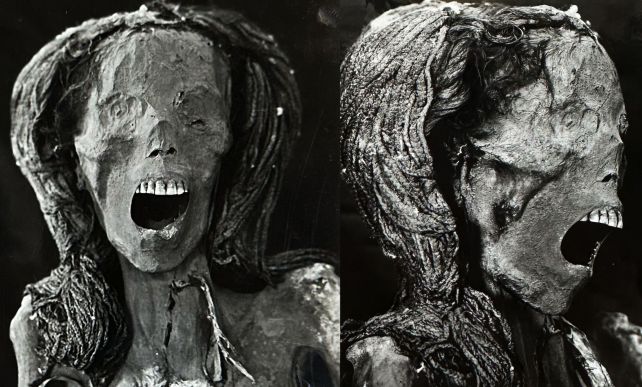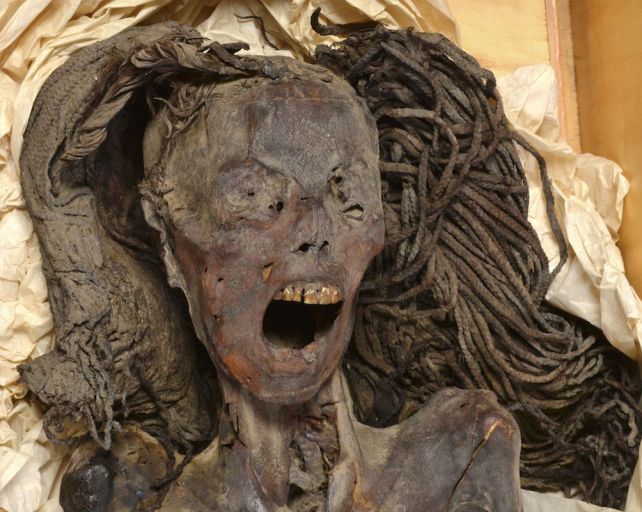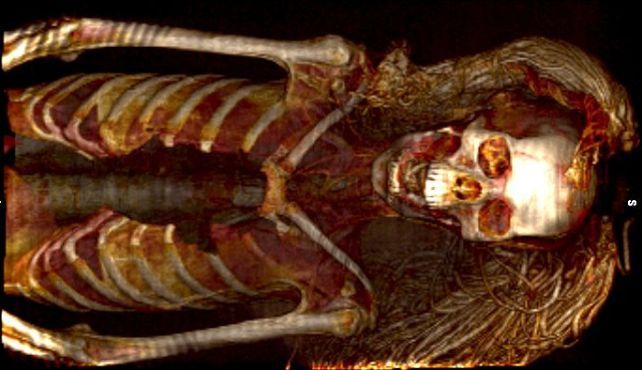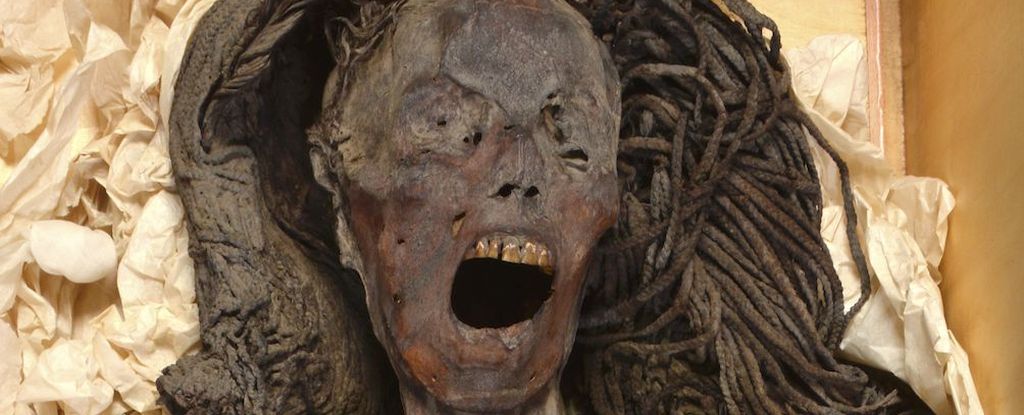The face of an ancient Egyptian mummy set in a gaping rictus may be the result of a death so painful, her face may have become locked in a scream.
Her name is unknown; but so striking is her grim facial expression that she is referred to as the Screaming Woman mummy. In spite of the feelings this face engenders, researchers had previously attributed it to the relatively benign cause of a shoddily performed mummification. New research, however, suggests that this wasn’t the case.
Radiologist Sahar Saleem of Cairo University and anthropologist Samia El-Merghani of the Egyptian Ministry of Tourism and Antiquities have performed a new examination of the ancient body. Their conclusion? Her burial was lavish – so lavish that it is unlikely to have been undertaken by sloppy professionals.
“She was embalmed with costly, imported embalming material,” Saleem explains. “This, and the mummy’s well-preserved appearance, contradicts the traditional belief that a failure to remove her inner organs implied poor mummification.”
The Screaming Woman was buried more than three millennia ago in the tomb of Semnut, an 18th dynasty royal architect to Queen Hatshepsut. Semnut was to be interred richly, and his tomb included a separate chamber for his mother and other, unnamed relatives, discovered in 1935.
The woman was one of these other relatives, and although she is unnamed, her burial was not without pomp. She was buried in a wooden coffin with two rings of silver and gold featuring carved jasper scarabs, and atop her head was a braided wig.
Saleem and El-Merghani wanted to know more about this woman and her manner of death, so they set about the most detailed examination of her remains to date. They carefully imaged her corpse using CT scans to study it in three-dimensional detail and conduct a virtual autopsy.
They also subjected samples to a range of high-detail analysis techniques, such as scanning electron microscopy, Fourier transform infrared spectroscopy, and X-ray diffraction analysis, to determine the unguents and compounds used in her embalming.

From an examination of her body, the researchers were able to determine that the woman had been small, reaching just 1.54 meters – a smidge over 5 feet – in height. She had died at around the age of 48 years old, and suffered arthritis. She was also missing several teeth – not unexpected, and likely to have occurred during life since her jawbone showed signs of healing after the tooth was removed.
No cause of death could be determined, but the body contained a surprise: her brain, diaphragm, heart, lungs, liver, spleen, kidneys, and intestine were all still intact. This is not entirely unheard of, but it is rare. In most eras – including that in which the Screaming Woman lived and died – the removal of most organs was the common practice during mummification.
But her burial had some other small differences from the norm, too. For example, her hands lay over her pelvis, rather than with the left hand across the chest and the right down by her side, as was common for royal women.

And, of course, there were the embalming agents. Her body was treated with juniper and frankincense, which would have to have been imported from Africa and Arabia, respectively.
Under the wig – woven from date palm fibers – her natural hair had been dyed with juniper and henna. And the wig itself had been treated with quartz, magnetite, and albite crystals. This would have stiffened the braided fibers, and colored them black to resemble real hair.
Taken together, this suggests that some care had been taken with her burial. So the notion that the Screaming Woman’s mouth fell open in the tomb after the practitioners failed to properly secure it closed doesn’t hold much water, Saleem and El-Merghani have found.
So what happened? Well, in rare cases, the muscles of a dying person might be able to freeze and lock in place, and stay that way into the period of rigor mortis. This is called cadaveric spasm, and it’s said to be stronger than rigor mortis and not easily reversed. It usually seems to be reported in cases where the person has died in an unusual state of extreme discomfort.
It’s also highly controversial, with many scientists arguing against its existence. Others argue that it does happen, but only in very rare circumstances. This contested phenomenon, however, could explain the face of the Screaming Woman.

“The mummy’s screaming facial expression in this study could be read as a cadaveric spasm, implying that the woman died screaming from agony or pain,” the researchers write in their paper.
“Embalmers likely mummified the contracted body of the woman … before it decomposed or relaxed, thus preserving her opened mouth position at death. It is also possible that the contracted muscles must have prevented embalmers from closing the mouth.”
The true fate of the woman, and how she died, will likely never be known. But, at the very least, the study of her remains, and those like her, give us a strange glimpse into humanity’s past, and the customs that marked their journeys out of lives lived so many years ago.
The paper has been published in Frontiers in Medicine.





